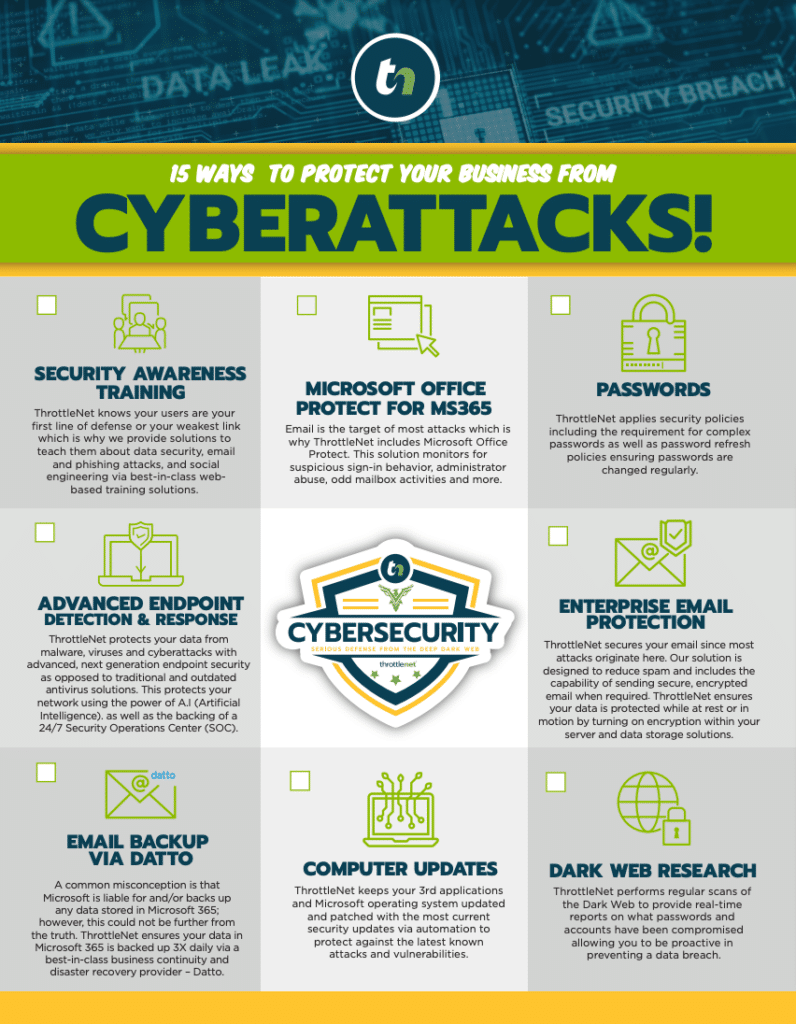Check out the video above to find out “What is social engineering”
What Is Social Engineering — And Why Every Business Should Understand It
Has your company ever received a strange email from “tech support” or a vendor asking for access to your systems? If so, your team may have already experienced social engineering—a type of cyberattack that manipulates people instead of technology.
Todd Budde, Director of Managed Services at ThrottleNet and leader of the company’s vCIO team, appeared on TNtv to discuss what is social engineering, how it works, and what every business owner needs to do to prevent it. His message is clear: no amount of technology can protect you if your people aren’t trained to recognize deception.
What Is Social Engineering in Cybersecurity?
So, what is social engineering exactly? In cybersecurity, it refers to the use of psychological manipulation to trick people into revealing sensitive information or granting unauthorized access. Instead of exploiting code, cybercriminals exploit human nature—our trust, curiosity, and instinct to help.
Budde describes social engineering as “the art of gaining access to data, networks, or facilities through human psychology.” Attackers pretend to be trusted sources—such as coworkers, IT support, or business partners—to lower their victim’s defenses.
Understanding what social engineering means helps companies realize that most cyberattacks begin with a human interaction, not a technical one. It’s often the first step before malware, ransomware, or data theft.
Common Examples of Social Engineering Attacks
To defend your business, it’s crucial to know what social engineering looks like in the real world. Hackers use many different tactics to deceive employees, from phone calls to fake websites. Here are the most common examples:
1. The Fake Tech Support Call
A scammer pretends to be from Microsoft, your IT provider, or another trusted company. They claim your system has a problem and ask for your login credentials or remote access. Once inside, they steal data or install malware.
2. The HR or Vendor Impersonation
Attackers often pose as HR staff or vendors, requesting payroll data, invoices, or “account verification.” Employees wanting to be helpful may unknowingly share sensitive information.
3. The Office Entry Trick
Social engineering doesn’t always happen online. Someone carrying boxes might ask you to hold the door so they can enter. Once inside, they can plug infected devices into company computers or access restricted areas.
4. The Dropped USB Drive
Hackers sometimes leave USB drives labeled “Confidential Payroll” or “Private Client Data” around the office. When an employee plugs one in, it automatically installs malicious software on the network.
These attacks are effective because they don’t rely on breaking technology—they rely on breaking trust.
Who Is Most Vulnerable to Social Engineering?
Many assume junior employees are the easiest targets, but Budde warns that executives are often the most at risk. Leaders are busy, confident, and sometimes bypass IT policies to save time. They might use personal devices or approve access requests without verification.
Attackers know this and research executives using LinkedIn or company websites. They craft convincing messages that appear personalized and urgent. One compromised executive account can give hackers complete access to the business.
That’s why everyone—from entry-level staff to CEOs—needs to understand what is social engineering and how to recognize it.
Why Social Engineering Works So Well
Social engineering attacks succeed because they exploit emotion over logic. Hackers understand how to trigger responses that override rational thought.
Common emotional triggers include:
- Authority: “This is IT Support—your account is compromised.”
- Urgency: “You must act immediately or lose access!”
- Curiosity: “See attached employee evaluations.”
- Fear or guilt: “If you don’t fix this now, your department could be exposed.”
- Helpfulness: “Can you help me access the network for a quick update?”
These tactics make employees act before thinking. Knowing what social engineering tactics look like helps your team pause and verify before responding.
How to Prevent Social Engineering Attacks
Budde emphasizes that awareness is the best defense. Technology can block viruses and spam, but only training can block manipulation. Here’s how businesses can protect themselves:
1. Conduct Ongoing Security Awareness Training
All employees should receive short, engaging sessions on what social engineering is and how it occurs. Real-world simulations—like fake phishing emails—help reinforce safe habits.
Training topics should include:
- How to verify identities before sharing information
- What to do when suspicious requests come in
- How to recognize emotional manipulation in messages
Regular training keeps employees alert and prepared.
2. Use Visual Reminders and Culture Reinforcement
Repetition builds awareness. Budde recommends creating posters and screensavers that remind employees not to share passwords or click unfamiliar links. Rotate them monthly to stay fresh.
Place them near printers, copiers, and break rooms where employees are most likely to pause and notice.
3. Make Reporting Simple and Encouraged
Employees should never fear reporting suspicious messages or incidents. Create a clear, fast process—such as a “Report Suspicious Email” button or a dedicated Slack/Teams channel.
Quick reporting allows IT to contain threats before they spread.
4. Enforce Executive Accountability
Executives must follow the same security rules as everyone else. Require multi-factor authentication, device management, and approval for any new technology connected to your network.
When leadership models good behavior, the entire organization follows suit.
5. Partner with a Trusted Cybersecurity Team
Working with a managed IT and cybersecurity provider like ThrottleNet gives your business the expertise needed to detect and stop social engineering attacks before they succeed.
ThrottleNet’s experts educate teams on what social engineering means, simulate real-world attacks, and monitor systems 24/7 for suspicious activity. Our vCIO-led strategy ensures your cybersecurity plan evolves alongside your business.
We provide:
- Security awareness training and phishing simulations
- Endpoint monitoring and ransomware protection
- Data backup and disaster recovery
- Risk assessments and compliance support
Why Understanding What Social Engineering Is Can Save Your Business
Cybercriminals no longer just hack computers—they hack people. The best firewall in the world won’t help if an employee unknowingly hands over credentials. That’s why understanding what social engineering is should be part of every company’s cybersecurity foundation.
Awareness, training, and vigilance can stop these attacks before they start.
Protect your team, your data, and your reputation with the right education and support.
Contact ThrottleNet today at 866-824-5882 or visit www.throttlenet.com to learn more about our cybersecurity awareness programs and vCIO-led protection.
Don’t let hackers outsmart your people—teach your people to outsmart the hackers.




